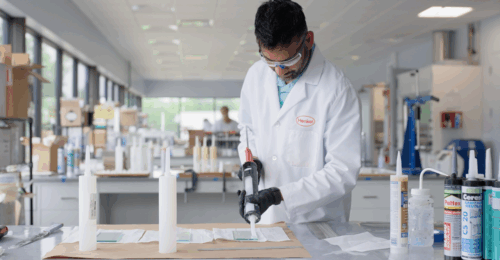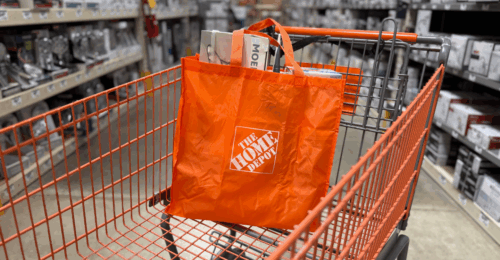Teaching children about sustainable practices is about more than protecting the planet; it also fosters responsibility and cultivates awareness of the world around them.
Here, we explore engaging projects that yield tangible results, allowing kids to experience the actual impact of their environmental efforts.
Paint a Rain Barrel
Rain barrels collect water from roof runoff by attaching to downspouts, and they serve as water-saving reservoirs for easy watering of household plants. Allowing your kids to transform an ordinary barrel with paint is a fun and memorable project that unleashes creativity while fostering water conservation awareness. Rust-Oleum suggests sanding the barrel to rough the surface to help it accept paint. Then, prime the surface with a roll-on primer. Once the primer has dried, sketch a pattern using a Sharpie or let your kids paint free-form and see where their creativity takes them. Behr’s Premium Plus tintable exterior paints are available in quart size, as are Rust-Oleum’s Ultra Cover interior/exterior paints.
Plant a Tree
Planting a tree is like welcoming a new pet, offering a fun opportunity to train kids about responsibility and patience! Following planting instructions, fertilizing, consistently watering and anticipating growth are small yet profound life lessons with meaningful rewards over time. Pick a tree that, when fully grown, will fit in the space you have available. Then, follow the planting instructions, which typically call for the hole to be dug at the depth of the container the tree came in and 3–4 times wider than the container, with the sides of the hold sloping in. This Eco Actions feature outlines how to plant a tree. And choosing a location that will provide shade to your home or air conditioning unit can help cut your home’s energy bills. Teaching kids about how to handle fungus or insect problems if they arise is also an excellent problem-solving opportunity. This Better Homes & Gardens feature provides guidance on different tree diseases and pests and how to treat them. For local advice, see if a nearby university has an extension office in your area. These are always excellent resources for local plant and tree guidance.

Container Gardening
Nothing teaches kids about food supply like enabling them to grow their own. Whether you have a single pot or an entire garden, kids can learn to grow food with just a little soil, water, sun and patience. For a simple container tomato project, start with a pot of at least one gallon and fill it with organic potting soil like Kellogg Garden Organics. Plant Back to the Roots Red Cherry Organic Tomato seeds by inserting the seeds at about a ¼” depth in the soil. Planting 5–10 seeds is ideal if some do not germinate. Your kids will see the beginning of tender green shoots emerging from the soil within 7–14 days. If provided full sun and watered regularly, these tomatoes will be little sweet, healthy snacks right off the stem within about two months. To make this sustainable project even more appealing, Back to the Roots tomato seeds are 100% organic and non-GMO heirloom quality, which means they have been passed down without being modified for at least 50 years.
Composting
Composting is the natural process of recycling organic matter like leaves, grass trimmings, and household vegetable and fruit scraps into nutrient-dense soil that can fertilize plants. This interactive, hands-on activity trains kids about natural systems, including decomposition, waste reduction and soil health. This fun and collaborative effort is directly relevant to their interactions with food and can be a daily science lesson!

Composting can be done in an official compost tumbler, small- to medium-sized trash can, plastic tote bin or even just right in the ground. This Eco Actions article outlines how to compost, and we highlight simple ways to get started below.
- Tumbling composting bins are convenient and eliminate the need to turn the compost by hand with a shovel or pitchfork. Instead, they simply rotate with the turn of a handle. As a result, they tend to work quickly and produce rich compost in 4–8 weeks depending on how much material is added to the compost. Other benefits of a tumbler include pre-venting for airflow, and they are raised off the ground, so they are not as susceptible to ants. The downside is these composters won’t attract worms from the ground like other options. Worms are beneficial to composting as they help break down organic material and even tend to produce compost with higher levels of the nutrients plants need, including phosphorous and nitrogen.
- A small- or medium-sized trash can with wheels is an affordable and accessible composting option. Generously drill holes throughout the can for airflow, add twigs and branches, then layer in dry leaves, woodchips, straw and any extra soil you may already have. Green leaves, fruit and veggie scraps, grass clippings, weeds, manure and even coffee grounds can then be added. More information about how to arrange these layers is available on homedepot.com. You’ll need to turn the compost every 3–4 days to ensure it is aerating. A trash can with wheels allows you to move the compost into the sun to help it warm up and break down, and even a simple, dark-colored plastic storage tote can work as long as you remember to drill holes all around it for airflow.
- Composting right into the ground is also possible. But beware that the decomposing veggie and fruit scraps may attract unwanted critters to your yard and may result in ant activity. If you see ants in your compost, stop adding fruit scraps and stick to veggie scraps.
Countless sustainable projects for kids are at your fingertips, like recycling at home, making artwork from recycled materials, volunteering to clean up a local waterway, picking up trash at a local park or simply getting outside for a walk. You only need a little creativity and adventure to empower your kids to consider the world around them and take responsibility for their own actions. The Home Depot strives to empower our customers and their families to make daily, sustainable choices. Sign up for our monthly newsletter for tips on environmentally preferred products and projects.







